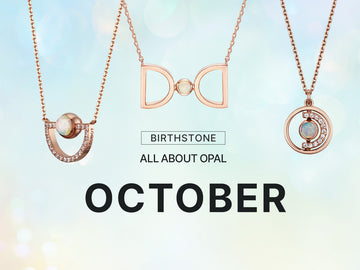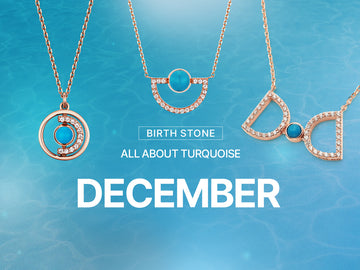Those born in October are lucky to call one of the most mesmerizing gemstones on the planet their own. Opals are known for their captivating internal rainbows; each gem displays a prism of vibrant colors that shine in an iridescent pattern when hit with light. This kaleidoscopic appearance is unique to opals, making each gem a one-of-a-kind treasure. Learn all about the history of this enchanting gemstone and its ties to October below!
The History And Symbolism Of Opal
The hypnotic play of color that opals are treasured for has given the gems many impressive comparisons over the centuries. Their internal fire has been likened to volcanoes, fireworks, and even entire galaxies.
Many cultures associated opals with deities, as they believed the colorful gems must have celestial origins.
- In Ancient Rome, opals were a symbol of love and hope. The name opal itself derives from the Roman word opalus, which meant “to see a change in color.” Over time, it became synonymous with the term precious stone.
- In Ancient Greece, citizens believed that opals could give wearers the gift of prophecy. They also considered opals protective stones that could ward off diseases. The Greeks believed that opals were the stone form of Zeus’ tears after the titans were defeated.
- In Arabic culture, opals were believed to have fallen from the heavens in flashes of lightning. Their internal fires were said to be remnants from the fall.
- In Indian lore, opals were said to be the stone form of Maya, the goddess of rainbows.
- In Peru, indigenous peoples thought of opals as gifts from Pachamama, the goddess of fertility.
- In China, opals were a symbol of good luck and fortune.
- In Europe, opals represented hope, truth, purity, and innocence.
The magical colors and alluring appearance of opals has made them a prominent feature of many royal jewel collections, from Roman emperors to the iconic Queen Victoria I. The gems have also been considered healing stones, especially for the eyes.
Opals have long been a gem of luck, happiness, loyalty, and confidence all over the world. They were briefly linked to misfortune because of their negative connotation in the 1829 novel Anne of Geierstein by Sir Walter Scott, but have since regained their rightful place as one of the world’s most coveted gemstones.
The Magic Stone
Many cultures believed that opals had supernatural powers and origins, since they were the only gemstones that could display every color of the rainbow.
Some ancient civilizations thought that opals could grant wearers the power of invisibility if they carried the gem wrapped in a bay leaf. Others believed that opals could be used to create ‘out of body’ experiences or connect the mind to the spiritual realm. Black opals in particular were used as an otherworldly tool, and were a prized prop for magicians.
Opal Care
Opals have a hardness rating of 5-6.5 on the Mohs scale, which means they are a relatively soft stone. Proper care is vital to avoid damage. Opal jewelry should always be removed in situations that may cause damage, such as cleaning, gardening, physical labor, or entering pools or hot tubs with chemicals.
Solid opals will be fine if briefly exposed to clean water, since all opals contain a small amount of water. Small amounts of humidity are actually good for opals, but exposure to rapid temperature changes should be avoided.
To keep your opal beautiful and iridescent, regularly clean your jewelry with a mixture of warm water, mild detergent, and a soft cloth. Gently wipe the piece clean rather than soaking or immersing it in the mixture. Avoid bleach and harsh chemicals. Ultrasonic cleaners should never be used with opals, as they can cause fractures.
October Birthstone Jewelry
Any piece of opal jewelry will be truly one-of-a-kind and magical, since each gem has its own unique inner glow. Opal birthstone jewelry is an excellent choice for October babies, whether you’re treating a loved one or yourself! If you’re not born in the month of October, opals are also the traditional gift for the 14th wedding anniversary.
Writer: Maria Polansky










